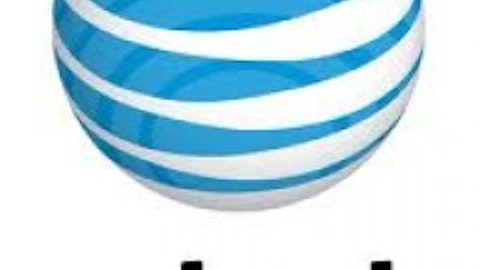AT&T Inc. (NYSE:T) and Verizon Communications Inc. (NYSE:VZ) are the clear leaders in the mobile and telecommunications industry. However, it is trying to decide which is the better buy that is the difficult part. A few funds are splitting the difference and betting on both. For example, Michael Messner of Seminole Capital recently added AT&T to his holdings, equaling 4% of his 13F portfolio, and increased his Verizon position 141% to equal 4.4% of his 13F portfolio. However, we feel there is a clear winner in Verizon.
The second quarter hedge fund interest has been on Verizon’s side according to the 13F portfolios of the hedge funds we track. Phill Gross and Robert Atchinson of Adage Capital Management increased their first quarter shares by 20%. Adage Capital Management now owns about 1.4% of the shares of both AT&T and Verizon, with 8.1 million shares of AT&T and 3.89 million shares of Verizon. See all of Adage Capital’s holdings here. Both companies have had insiders selling during the second quarter near current price levels. (See recent AT&T insider sales here and recent Verizon insider sales here).
On the surface, these companies appear to trade in lock step from a valuation standpoint, and even have almost exact betas, with AT&T trading at a 0.57 beta and Verizon at a 0.5. Both companies receive the majority of their revenues from wireless related services; for the second quarter AT&T received 51% of its revenue from wireless and Verizon 64%. The consensus EPS estimates for 2012 and 2013 predict a 7.5% increase for AT&T, and a 13.7% increase for Verizon. Forward P/E ratios also come in very similar, with AT&T trading at a forward P/E of 14 and Verizon at 15.7.
The other key players in the telecommunications industry include Sprint Nextel Corporation (NYSE:S) Deutsche Telekom AG (ETR:DTE) (owner of T-Mobile), and Telefonica SA (NYSE:TEF). Where AT&T and Verizon trade similarly with respects to P/E ratios, their competitors vary. Sprint has a negative trailing EPS, while Deutsche trades at a 70 P/E and Telefonica at an 11.6 P/E. All of these companies are much smaller as measured by market cap, with Telefonica the largest of the three at $67 billion, still only half the size of Verizon, while Deutsche is at $54 billion, and Sprint is at $16 billion.
The contrasts between AT&T and Verizon become clear when looking at their operational metrics. Both companies appear to be adding strong numbers with respect to subscribers, but in a head-to-head comparison, AT&T’s wireless segment added a net 320,000 subscribers for high value postpaid services, while Verizon added 888,000 net postpaid subscribers in the second quarter. One advantage for AT&T is that smartphones are now 62% of its postpaid subscriber base, compared to only 50% for Verizon. This gives AT&T a higher wireless postpaid ARPU of $64.93, compared to Verizon’s $56.13, but Verizon’s ARPU is growing almost as twice as fast as AT&T’s. Wireless OIBDA-to-service-revenue margin appeared strong for AT&T in the second quarter coming in at 45%, but Verizon once again outdid AT&T by posting a wireless OIBDA-to-service margin of 49%.
AT&T is the leader in smartphone adoption, mainly due to Apple’s iPhone, but its network is becoming strained and as a result its service is lagging that of Verizon. A key function of the industry is spectrum, and obviously, there is an undeniable shift from a voice focused wireless model to a data driven model.
Since AT&T announced it was ending its campaign to acquire T-Mobile in December 2011, the company is up almost 30%. While the stock has reacted relatively positive to the abandonment of the T-Mobile acquisition, we see this as a fundamental disadvantage to the company. It appears that AT&T will have a difficult time keeping up with Verizon in the spectrum game. A key move for Verizon has been the AWS spectrum acquisition, which will allow Verizon the capacity to meet increased wireless data network traffic demands. We believe that Verizon is now better positioned to build its 4G LTE network and cover areas of high and increasing data traffic demand, while other major carriers, such as AT&T and Sprint, have less of a capacity to do so.
The year-to-date to August 31 price movement for the integrated telecommunications services sub-industry index rose 14.5%, while AT&T is up over 20% and Verizon only 6% over the same time period. Given AT&T has already seen a run up in its shares, the remaining upside for the stock might be limited. Both stocks offer healthy dividend yields relative to low Treasury rates, with AT&T having a dividend yield at of 4.72% and Verizon a yield of 4.63%.
Lastly, the switch between companies is not always as easy as expected, especially if you have an iPhone. Thus, customer churn will largely be driven by cell service. If companies cannot provide a reliable network, customers will have no choice but to find a better provider. Currently, it appears Verizon might be in the best position to provide the best service going forward. In what we consider one of the more important comparisons, AT&T is expected to cover 150 million people with its LTE network by the end of 2012, and complete 80% of its network coverage buildup by the end of 2013. Where on the other hand, Verizon already covers 230 million and is expected to complete its full coverage plans by mid-2013.




